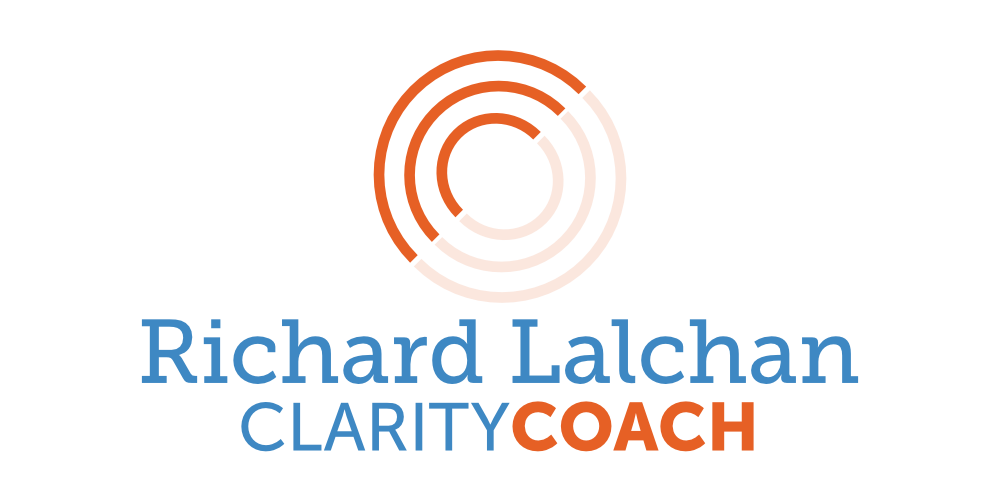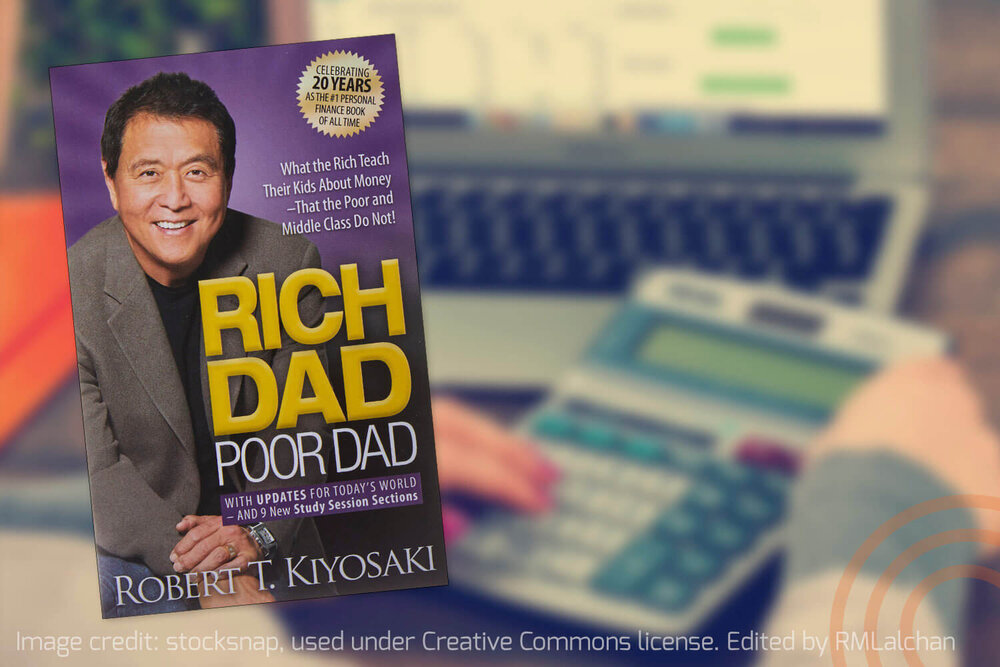How to increase your financial intelligence
Rich Dad Poor Dad, the number one best selling book in personal finance, by Robert Kiyosaki might seem a strange choice for me to review.
However, my goal as a Clarity Coach is to help you live a life that truly reflects your potential, then financial intelligence is a key aspect to this.
For full disclosure, I have only recently come across this book (despite it being over 20 years old) and am working through implementing the principles behind it. I am not there yet, and do not have the cash flow income it describes. So my review is based on my understanding so far which includes reading Robert’s follow up book Cashflow Quadrant and watching hours of his videos. My hope is that this review will act as an encouragement for you to increase your own financial intelligence as I am.
Lack of Financial Education
Imagine if you had been taught to truly understand money. I don’t mean to hold down a job or to save, or even to start a small business. I mean to understand the principles of what makes the wealthy truly rich and what it is that keeps the poor and middle class working all hours God sends, yet never getting out of the rat race. That would be a pretty good foundation right?
Robert Kiyosaki’s aim with Rich Dad Poor Dad, written originally in 1997, updated in 2017, is to increase the financial intelligence of humans. Its core message is garnered from his frustration of what his schooling simply did not teach him.
Some basic concepts to generate and manage money, a need everyone has, this financial puzzle was not considered important enough to be taught in schools and colleges above subjects that people would never ever use outside of the classroom. Not much has changed today.
These financial puzzle pieces comprise questions such as:
What is debt and credit? How do I manage them?
What is a true asset and why is a house considered an asset if it’s constantly a cost?
What's the point of saving money if governments just print more when they need it?
How come the wealthy pay less taxes?
Why do the rich get richer and the poor seem to get poorer?
How do I escape the rat race?
Why wasn’t I taught anything beneficial about finances at school?
Robert Kiyosaki explains his frustrations with financial education and his desire to do something about it. I admire him for that as he has obviously followed through on his principles within the book and made them work for him.
He owns over 7000 properties across the US and is a wealthy multi-millionaire. He has the experience, both good and bad, to talk about such things–as it didn’t start that way.
In 1985 Robert and his wife Kim were flat broke, in serious debt and living out of an old brown Toyota. Five years later they were millionaires. Rich Dad Poor Dad is the story of how that happened and how it doesn’t take money to make money.
Rich Dad Poor Dad is written in an accessible style, with Robert not afraid to call out stupidity when he sees it–including his own. He regularly talks about his poor dad (which was his real dad) as an example of someone who had intelligence–he had a PhD and worked for the government, but yet he didn’t have financial intelligence. He was often poor.
Money Mindset
The key mindset shifts for me from Rich Dad Poor Dad were:
Defining what a true asset is
The difference in thinking between the poor, the middle class, and the rich
Firstly, having a definition of an asset to be something that constantly generates you wealth, provides a totally different view of property and business. Instead of a house or a car by default being an asset, it is only an asset if it is constantly generating you a cash flow. That is, you are earning profit from it in your sleep. This is not the case for most properties, and certainly not cars.
Thinking of assets in this way increases the potential to generate a passive income where the initial hard work you have put in means little or no on-going effort is required to maintain the return.
Oh, and I don’t mean retirement–where with the rising older population, we’re often told the potential pension crisis may mean the money just isn’t there that people had been told would be.
No, I mean before that. The ability to generate a passive income higher than your expenses, whether through property, business, network marketing, all means that the very thing many of us complain about–not having enough time, having to work harder and seeing less of our families and friends, with the passive income, this problem is solved. Your true assets are paying your income each month, not your salary from a job.
This ties into the second mindset shift: ‘The poor and middle class work for money. The wealthy make money work for them.’ As Robert Kiyosaki explains, this really is the difference between the poor, the middle class and the rich. It’s moving out of the rat race. The difference between Robert’s rich dad and poor dad. His poor dad was well educated, had a stable, well respected job with a decent salary, but always seemed to have to put in more and more hours in his job, yet still be living from pay-check to pay-check.
His rich dad on the other hand (you’ll have to read the book to find out why he had two dads,) dropped out of college, had little academic education to speak of, but ran his own business employing others. He had time to spend with his family and didn’t seem to worry about money. He taught his financial intelligence to Robert.
The way we are told to live life ‘go to school, get a job pay your taxes, save money, buy a house’, is according to Robert Kiyosaki, not very good advice. This is what he says effectively makes most people into a wage slave; a paid up member of the rat race.
The wealthy mindset knows that schooling is failing at teaching core things people need to know for life. Jobs can be a false sense of security. Taxes should be minimised (legally!). Buying a house is not the be all and end all it’s promised to be. Why save when the government actively devalues your money every time they print more notes.
Robert Kiyosaki explains this well in his book. However, one criticism I have of his approach, is his view on debt. He is all for getting into debt–albeit intentional debt and only for true assets; ones that are generating cash flow. So I do accept he is not advocating reckless spending. But I prefer the Dave Ramsey approach which is to avoid debt at all costs; to pay off your mortgage as soon as humanly possible, not leaving it to go full term. He, Dave, has certainly made this work for him as his net worth is even more than Robert Kiyosaki’s at last look.
Conclusion
In addition to the Rich Dad Poor Dad book, if you prefer to watch rather than read, check out Millennial Money, Robert Kiyosaki’s YouTube channel encouraging and urging millennials to think about their financial education and not leave it to chance.
He has also created a CashFlow board game described by some as Monopoly on steroids. The point of this is to teach financial education in a fun engaging way. Having bought and played it myself, I definitely see the power it has to grow financial intelligence that simply isn’t getting taught in schools, universities and generally in life. And it is fun!
Regardless of Robert Kiyosaki’s view on debt, I highly recommend grabbing yourself a copy of Rich Dad Poor Dad. It has so much wisdom that can transform your mindset on money and so increase your ability to truly reflect your potential.

